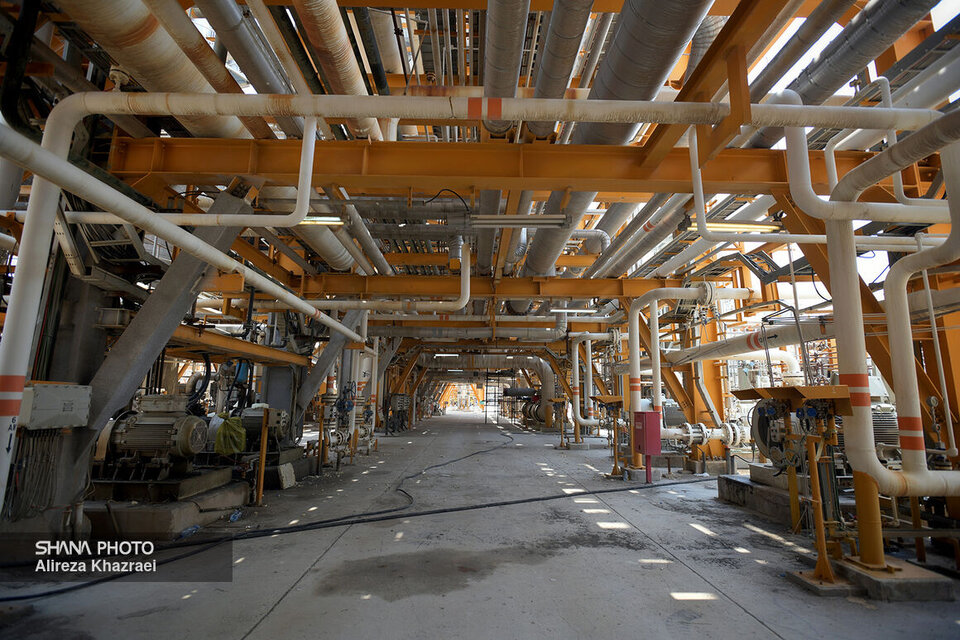Additionally, by supplying 135 million barrels of gas condensates to the Persian Gulf Star Refinery, SPGC played an unmatched role in gasoline production.
As Iran’s largest gas production hub, SPGC has been instrumental in meeting the country’s energy needs for the past 26 years. The CEO reported record-breaking production levels, including delivering nearly 610 million cubic meters of sweetened gas to the national grid on Feb. 3, 2025, during a severe cold snap—a historic milestone for the complex.
Impact of increased gas production over 26 years
The official gas production and sweetening operations at SPGC began in 2001 with phases 2 and 3. Back then, daily feedstock from the South Pars field was 50 million cubic meters, with 40 million cubic meters processed. Today, thanks to industrial development, strict safety protocols, and employee innovation, SPGC’s 13 refineries process 580 to 600 million cubic meters of natural gas daily. Since its establishment, the complex has sweetened and injected 2,126 billion cubic meters of gas into the national grid.
SPGC’s role in meeting Iran’s gas demand
SPGC supplies 73% of Iran’s domestic and industrial gas needs. In 1403, it injected over 196 billion cubic meters of gas into the national grid—6 billion more than the previous year.
Ensuring stable gas supply in winter
With some refineries over 25 years old, SPGC prioritized critical maintenance on pumps and turbocompressors to sustain production. Flaring was reduced from 8.7 million cubic meters in 1401 (2022-23) to 5.6 million in 1402 (2023-24), with a target of 3 million by March 2026.
Maintenance schedules were optimized to minimize downtime, cutting turnaround times from 45 days to 20-25 days. Preparations for upcoming overhauls are already underway to ensure uninterrupted gas supply during peak demand.
Economic contributions
Beyond supplying 73% of Iran’s gas, SPGC produces significant volumes of gas condensates and derivatives, supporting domestic industries and exports. Each refinery generates daily outputs worth $10 million—totaling $3.5 billion annually—including:
- 50 million cubic meters of gas
- 400 metric tons of sulfur
- 77,000 barrels of gas condensates
- 1,800 metric tons of butane
- 1,100 metric tons of propane
- 2,750 metric tons of ethane
SPGC also plays a crucial role in gasoline self-sufficiency by supplying feedstock to the Persian Gulf Star Refinery, the world’s largest gas condensate refinery.
Domestic manufacturing & self-sufficiency
SPGC prioritizes local production, breaking foreign monopolies on 11,589 critical items. In 1403, contracts for 160 strategic equipment items were awarded to Iranian manufacturers, saving $4.8 million in foreign currency. Key localized components include:
- Compressor parts
- Industrial pumps
- Explosion-proof motors
- Gas analyzers
- Turbine oils
Sanctions & supply chain resilience
Sanctions have not halted SPGC’s operations. The complex maintains strategic reserves of spare parts and has streamlined procurement through domestic partnerships, ensuring production continuity.
Innovation & strategic autonomy
SPGC’s odorant production unit—the only one in Iran and the Middle East—has eliminated reliance on imports since 2018, producing over 2,500 metric tons in 1403.
By leveraging domestic expertise and innovation, SPGC continues to drive Iran’s energy independence and economic growth.


Your Comment